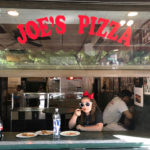 By Admin, BuyLocalBG.com, BuyLocalBg@gmail.com/
By Admin, BuyLocalBG.com, BuyLocalBg@gmail.com/
Thursday, January 12th, 2012 11:00 AM CST
On this day in 1862 (150 Years ago), The Sunday Delta in Louisiana reported, “General Buell has about 110 thousand men. The Confederate Army has about 90 thousand to 100 thousand men now under arms in Kentucky. General Johnston is preparing with heavy defenses. He will seek and attack the enemy. The great battle for the west will be fought in the Bowling Green vicinity.” The war was already being planned in Bowling Green but so was the capitol city of Kentucky’s birth.
It was around this time that the Confederate convention for Kentucky was going on in Russellville (If anyone has an idea of where or if this building still exists let us know). It was in this convention that those gathered requested their admittance into the confederacy. Also, this was the time that Bowling Green (some believe today marks the 150th anniversary) was selected as the capitol of the Confederate state of Kentucky.
The new Governor, we covered last week, was George Johnson who took residence in the “Capitol” building in Bowling Green. The residence still standing and a private home today at 1320 Park Street. All of this was happening as many were already seeing the grip on the area by the Confederacy already loosening. The loss by the Confederacy at the Battle at Middle Creek in Floyd County on January 10th and Battle of Mill Springs on January 19th in Pulaski and Wayne County.
The Union was closing in on Bowling Green from the North and the East as the Confederates were setting up their capitol in Bowling Green. The time of being Confederate Capitol would be short lived and we will continue as we get closer to the anniversary of the loss of Bowling Green to the Union.
Also check out the Civil War Trail (website link for trail) via the Convention and Visitors Bureau or Kentucky Museumon WKU’s Campus.
Past Civil War 150:
Part 1: Mt. Moriah Cemetery, resting place of “African American Union Soldiers.”
Part 3: “Defending the L&N Railroad Wayside Exhibit.”
Part 4: “Mt. Ayr & Fort Underwood”
Part 5: “Baker Hill and Downtown Bowling Green”
Part 6: “Confederate Defense Line and Rifle Trench.”
Part 7: “Fort C.F. Smith and College Hill.”
Part 9: “Hines Boatlanding and Civil War Hospital Exhibit.”
Part 12: “Bowling Green’s Official Sesquicentennial Event.”
Part 14: “Fort Lytle or Fort Albert Sydney Johnston.”
Part 16: “L&N Railroad, ‘Civil War and the Railroad’ exhibit.”
Part 17: “The Presbyterian Church on State Street. Former School and Civil War Hospital.”
Also, there is a much better trail tour (we love this so much), check out the Civil War Trail (website link for trail) via the Convention and Visitors Bureau or Kentucky Museumon WKU’s Campus.










